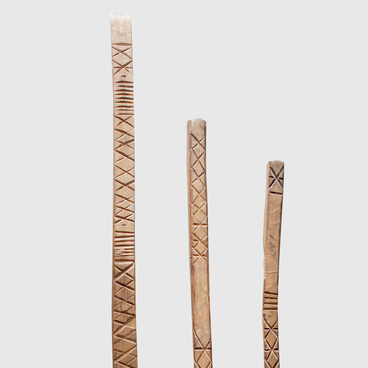Buddhism had a great influence on the traditional culture of Tuvans. This religious current affected their wedding, childbirth and funeral rituals, and is reflected in holidays and alternative medicine.
Buddhism also influenced local shamanism, with which they coexisted for several centuries.
The first wave of Buddhism came to the territory of Tuva in the 9th century, during the Uyghur Khaganate. In the 13th — 14th centuries, Tuva was part of the Mongol Empire: the earliest Buddhist temples, which archaeologists found in Tuva, date back to that period.
In the second half of the 18th century, after the defeat of the Dzungar Khanate by the Qing Empire’s troops, Tuva came under the rule of Manchuria. At that time, Mongolian lamas-missionaries, representatives of Gelug (“The Yellow Church”) appeared. This Tibetan school emphasized monastic practices and discipline.
In the 1770s, the first permanent Buddhist monasteries were built in Tuva. In the second half of the 19th century, they were already in every Tuvan region — kozhuun. During this period, trade and cultural ties with the southern regions of Russian Siberia, including the Yenisey province, were actively developing.
Merchants, travelers, and explorers brought objects from Tuva that reflected the way of life and beliefs of their southern neighbors. Many artifacts were donated to the Minusinsk Museum. This is how the Dharmapala Hayagriva figurine came to be in the collection.
The exhibit was made in a Tuvan Buddhist monastery (khuruee) in the late 19th century. Hayagriva translates as “having the neck of a horse”. The name is related to the notion of horses as sacred animals. Hayagriva is the image of an enlightened being, the idam. They were usually depicted with many hands, heads, and eyes. Idams could be joyful, peaceful, or angry.
Dharmapalas are wrathful deities from the Varjayana (esoteric system of late Buddhism). They protect the teachings of Buddha and every practicing Buddhist. The deities are attributed to the family of Amitabha Buddha, who was the most famous of the Five Wisdom Buddhas.
There are 108 forms of representation (embodiment) of Hayagriva. Dharmapala Hayagriva is depicted with one human head and one or two snakes on its body. A small horse’s head was placed in the hair. Hayagriva usually holds symbolic Buddhist objects: a rod, an arrow, a lotus flower, a skull bowl — kapala — or others.
According to interpretations, the wrath of Hayagriva arises out of sympathy, and it is directed at the causes of suffering. It is believed that the main skill of this deity is to treat ailments, especially skin diseases. Among them was leprosy, which could be inflicted by the Nagas — serpent-like mythical creatures. In popular Buddhism, among the Tibetans and Mongols, the image of Hayagriva is associated with the worldly good — supposedly, it multiplies the herds of horses.
Buddhism also influenced local shamanism, with which they coexisted for several centuries.
The first wave of Buddhism came to the territory of Tuva in the 9th century, during the Uyghur Khaganate. In the 13th — 14th centuries, Tuva was part of the Mongol Empire: the earliest Buddhist temples, which archaeologists found in Tuva, date back to that period.
In the second half of the 18th century, after the defeat of the Dzungar Khanate by the Qing Empire’s troops, Tuva came under the rule of Manchuria. At that time, Mongolian lamas-missionaries, representatives of Gelug (“The Yellow Church”) appeared. This Tibetan school emphasized monastic practices and discipline.
In the 1770s, the first permanent Buddhist monasteries were built in Tuva. In the second half of the 19th century, they were already in every Tuvan region — kozhuun. During this period, trade and cultural ties with the southern regions of Russian Siberia, including the Yenisey province, were actively developing.
Merchants, travelers, and explorers brought objects from Tuva that reflected the way of life and beliefs of their southern neighbors. Many artifacts were donated to the Minusinsk Museum. This is how the Dharmapala Hayagriva figurine came to be in the collection.
The exhibit was made in a Tuvan Buddhist monastery (khuruee) in the late 19th century. Hayagriva translates as “having the neck of a horse”. The name is related to the notion of horses as sacred animals. Hayagriva is the image of an enlightened being, the idam. They were usually depicted with many hands, heads, and eyes. Idams could be joyful, peaceful, or angry.
Dharmapalas are wrathful deities from the Varjayana (esoteric system of late Buddhism). They protect the teachings of Buddha and every practicing Buddhist. The deities are attributed to the family of Amitabha Buddha, who was the most famous of the Five Wisdom Buddhas.
There are 108 forms of representation (embodiment) of Hayagriva. Dharmapala Hayagriva is depicted with one human head and one or two snakes on its body. A small horse’s head was placed in the hair. Hayagriva usually holds symbolic Buddhist objects: a rod, an arrow, a lotus flower, a skull bowl — kapala — or others.
According to interpretations, the wrath of Hayagriva arises out of sympathy, and it is directed at the causes of suffering. It is believed that the main skill of this deity is to treat ailments, especially skin diseases. Among them was leprosy, which could be inflicted by the Nagas — serpent-like mythical creatures. In popular Buddhism, among the Tibetans and Mongols, the image of Hayagriva is associated with the worldly good — supposedly, it multiplies the herds of horses.



